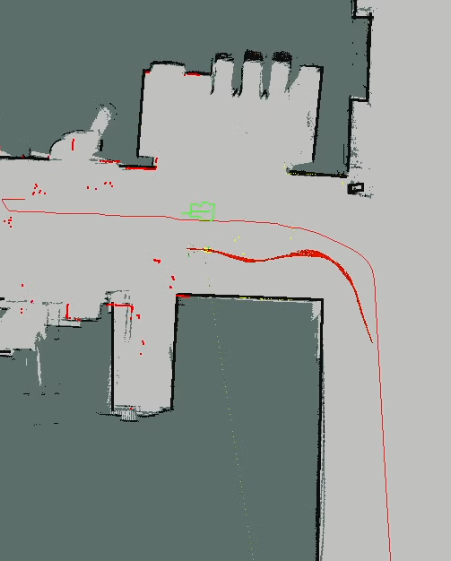Interesting... First, I would investigate if it's actually related to the architecture at all (arm64 vs amd64).... have you tried it with a regular desktop computer/laptop and it works nearly 100% of the times with those same parameters?
It would be helpful if you could share (dropbox/google drive/...) a ZIP with everything needed to reproduce: launch and config files + rosbag + launch instructions.
My feeling is that it's all related to tuning the uncertainty parameters of odometry. If failures are always near a curve, odometry normally is bad at those points, and we need either a larger uncertainty for rotations in the motion model, or a larger number of particles.
Another direct experiments you can try are:
KLD_minSampleSize=150==> try larger values for the minimum number of particles, e.g. 300, 400, 500.LF_decimation=20==> try smaller values, e.g. 15, 10.
Most likely you will fix it with the number of particles, if it runs OK 90% of the time. If it always fail on curves, then updating uncertainty parameters should be required.


I am evaluating the
mrpt_localizationpackage and have run into a strange situation with repeatability.Every so often, mrpt_localization will result in a disturbingly different localization result than other times. Of course, the "different" result is wrong and occurs when we are running live in our test environment (Murphy still seems to have his way) and hence the issue. So we built up an offline setup where we can see the impact of parameter changes, repeated runs and such. This appears to happen only on arm64 and not on amd64.
Environment:
mrpt_localization: 1.0.4 from source and also 1.0.3 from ros-distroI'll be happy to share the map pgm, mrpt_localization parameters and such to anyone interested:
Some screenshots from various runs are included below. Legend:
Correct runs:
Every now and then (roughly 10% of the time), incorrect runs:
How would one go about figuring out where to look to try to look for a root cause? The only (arguably unrelated issue) i can find that talks about arm64 and amd64 differences is this one.
Here is the
mrpt_config.inifileand the launch file calls out these parameter values:
If it helps any, if we use the
default_noise_phivalue of2.0(which is the default), the localization is always incorrect -- this is how we had captured the original bag file. If we set it to0.5, localization is clearly better, but runs into this repeatability issue@maxbader, we could use some of your guidance here